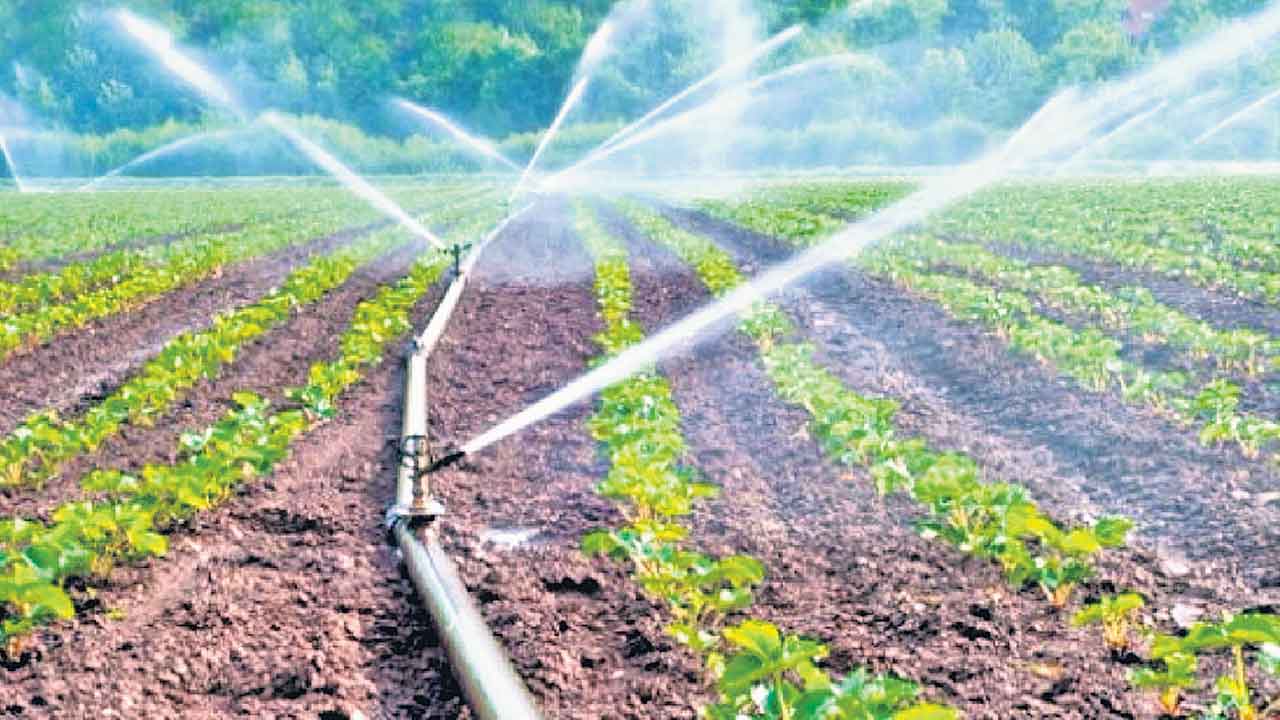Zoology NEET Special | Decomposition rate is slower if..?

1. Vertical distribution of different species occupying different levels is called as ?
A) Standing crop B) Standing state
C) Stratification D) Decomposition
2. What is the basic requirement for any ecosystem to function and sustain?
A) Primary production
B) Decomposers
C) Constant input of solar energy
D) Nutrient cycling
3. Primary production is expressed as ?
A) K 𝐶𝑎𝑙𝑚2 B) K 𝐶𝑎𝑙/𝑚2
C) 𝑔/𝑚2 D) both B & C
4. Net primary productivity (NPP) equals to ?
A) NPP = R – GPP B) GPP – R = NPP
C) NPP = GPP + R D) GPP = R – NPP
5. Primary productivity depends on?
A) Variety of environmental factors
B) Availability of nutrients
C) Photosynthetic capacity of plant
D) All of these
6. Who breaks down complex organic matter into inorganic substances like CO2, water etc.?
A) Crop roots
B) Decomposers
C) Grazing Cattle D) None of these
7. The correct way of decomposition ?
A) Fragmentation → leaching → humification → catabolism → mineralization
B) Fragmentation → leaching → catabolism→ humification → mineralization
C) Fragmentation → catabolism → leaching → mineralization → humification
D) Fragmentation→ mineraliza tion→catabolism → leaching → humification
8. Bacteria and fungal enzymes degrade detritus into simpler inorganic substances. This process is called as ?
A) Leaching
B) Fragmentation
C) Catabolism
D) Humification
9. ____favours decompositions ?
A) Warm & dry environment
B) Warm & moist environment
C) cold & dry environment
D) cold & moist environment
10. Plant capture only ______ of the PAR and this amount of energy sustains the entire living world
A) 50 – 60 % B) 40 – 80 %
C) 2 – 10 % D) 20 – 40 %
11. Based on the source of their nutrition or food, organisms occupy a specific place in the food chain that is known as their
A) Food web B) Trophic level
C) Niche D) Eco level
12. The standing crop is measured as the ?
A) Mass of living organisms
B) Biomass
C) The no. in a unit area
D) All of these
13. The pyramid of biomass in sea is ?
A) Always upright B) Generally inverted
C) Both A & B
D) None of these
14. Pyramid of energy is ?
A) Always inverted B) Sometime upright
C) Always upright D) Sometimes inverted
15. A community that is in near equilibrium with the environment is called as ?
A) Pioneer community
B) Middle community
C) Climax community
D) Sere
16. Areas where primary succession occurs ?
A) Bare rock
B) Newly cold lava
C) Newly created pond
D) All of these
17. Select the correct statement ?
A) secondary succession is faster than primary succession
B) primary succession is faster
C) Both are a equal speed D) None of these
18. The individual transitional communities are termed as ?
A) Seral stages B) Pioneer
C) Seral communities
D) Both A & C are correct
19. Which type of succession takes place in wet areas ?
A) Hydrarch succession
B) Xerarch succession
C) Mesarch succession
D) None of these
20. The species that invade a bare area called ?
A) Sere B) Pioneer species
C) Climax species D) None of these
21. Which one of the following occur as a pioneer species on rocks ?
A) Bryophytes
B) Phytoplankton
C) Lichens D) Blue algae
22. Choose the correct sequence of succession in water ?
A) Phytoplanktons → rooted-submerged plants → rooted floating angiosperms → free floating plants → reed swamp → marsh-meadow → scrub → the trees → forest
B) Phytoplanktons → free floating plants → rooted-submerged plants → rooted floating angio sperms → reed swamp → scrub → marsh-meadow → the trees → forest
C) Phytoplanktons → rooted-submerged plants → reed swamp → rooted floating angio sperms → free floating plants → marsh-meadow → scrub → the trees → forest
D) None of these
23. Choose the correct statement?
A) All succession whether taking place in water or on land, proceeds to a different climax community
B) All succession whether taking place in water or on land, proceeds to a similar climax community the mesic
C) All succession whether taking place in water or on land, proceeds to a similar climax community the xeric
D) All of these
24. During succession some species colonise an area and their population become more numerous whereas population of other species ?
A) Increases
B) Decline and even disappear
C) Migrate
D) None of these
25. The climax community remains _______ as long as the environment remains ______?
A) Unstable, unchanged
B) Stable, unchanged
C) Stable, changed D) Stable, changed
26. Choose the correct sequence ?
i) lichens ii) Grasses
iii) Bryophytes
iv) Higher plants v) Forest
A) i → ii → iii → iv → v
B) i → iii → ii → iv → v
C) i → iv → ii → iii → v D) v → iv → i → ii → iii
27. In hydrarch succession, the pioneer and climax community are respectively ?
A) Forest, Phytoplanktons
B) Phytoplanktons, Forest
C) Mess, Trees
D) Lichen, Trees
28. The movement of nutrients elements through the various components of an ecosystem can be called ?
A) Gaseous cycle
B) Nutrient cycling
C) Sedimentary cycle
D) All of these
29. Reservoir for gaseous type of nutrient cycle ?
A) Earth’s crust B) Rock
C) The atmosphere
D) Water bodies
30. Reason behind nutrients never lost from ecosystem?
A) Because nutrients present in large amount
B) Because they are recycled
C) Because they have no use
D) All of the above
31. _____ is defined as the amount of biomass or organic matter produced per unit area over a time period by plants during photosynthesis ?
A) Gross primary productivity
B) Primary production
C) Secondary production
D) None of these
32. The rate of formation of new organic matter by consumers is called as ?
A) primary productivity
B) Gross primary productivity
C) Secondary productivity
D) Respiratory loss
33. The annual net primary productivity of the whole biosphere is approximately?
A) 190 million tons
B) 170 million tons
C) 170 billion tons D) None of these
34. The process of breaks down complex organic matter into inorganic substances is called as ?
A) Fragmentation B) Humification
C) Decomposition D) Leaching
35. Decomposition rate is slower if?
A) Detritus rich in lignin & chitin
B) Rich in nitrogen & sugars
C) Low in nitrogen & chitin
D) Low in lignin
36. Match the following.
i. Plants a. Lion
ii. Carnivores b. hytoplanktons
iii. Herbivores c.Wolf
iv.Top Carnivores d.Cow
A) i-b, ii-c, iii-d, iv-a
B) i-c, ii-d, iii-b, iv-a
C) i-b, ii-d, iii-a, iv-c
D) i-d, ii-b, iii-a, iv-c
37. Choose the correct sequence –?
A) Producer → herbivore → primary carnivore → secondary carnivore
B) Producer → primary carnivore → herbivore → secondary carnivore
C) Primary carnivore → secondary carnivore → herbivore → Producer
D) None of these
38. Identify the pyramid ?
A) Pyramid of number
B) Pyramid of biomass
C) Pyramid of energy
D) None of these
39. The gradual and fairly predictable change in the species composition of a given area is called ?
A) Hydrarch succession
B) Ecological succession
C) Pioneer succession
D) None of these
KEY
1-C 2-C 3-D 4-B
5-D 6-B 7-B 8-B
9-B 10-C 11-C 12-D
13-B 14-C 15-C 16-D
17-A 18-D 19-A 20-B
21-A 22-A 23-B 24-B
25-B 26-B 27-B 28-D
29-C 30-B 31-B 32-C
33-C 34-C 35-A 36-A
37-A 38-A 39-B
BABANNA
YELUGUDARI,
Senior lecturer in Zoology, phone:
9492316663
Latest Updates
దేశంలో ‘జీవన వీలునామా’ నమోదు చేసిన మొదటి హైకోర్టు?
తాత్వికతను తెలిపేది.. రాజ్యాంగానికి గుండెలాంటిది
ఎలకానిక్ రికార్డులు.. ప్రాథమిక సాక్ష్యాలు
శుక్రకణాలు తాత్కాలికంగా నిల్వ ఉండే ప్రాంతం?
సెకండరీ ఎడ్యుకేషన్ కమిషన్కు మరోపేరు?
‘వెయ్యి ఉరిల మర్రి’ గా పేరుగాంచిన ఊడలమర్రి ఏ జిల్లాలో ఉంది?
రక్షణ దుర్గాలు – నాటి పాలనా విభాగాలు
క్యారెట్ మొక్క ఎన్ని సంవత్సరాలు జీవిస్తుంది?
ప్రపంచ ప్రసిద్ధి అగాధాలు – ఐక్యరాజ్యసమితి లక్ష్యాలు
అణు రియాక్టర్లలో న్యూట్రాన్ల వేగాన్ని తగ్గించేందుకు ఉపయోగించే రసాయనం?






